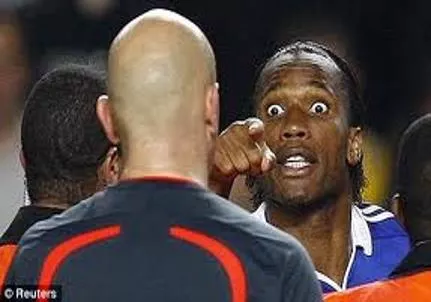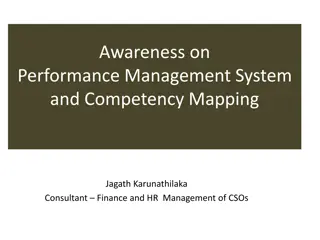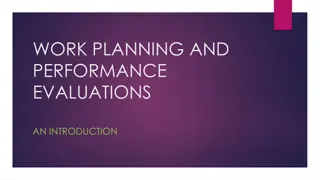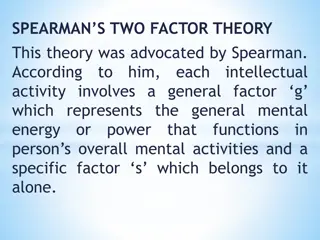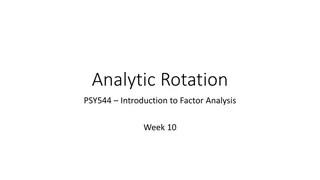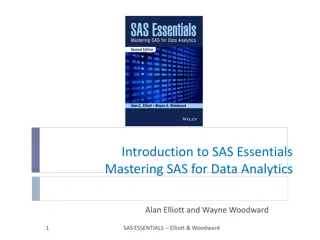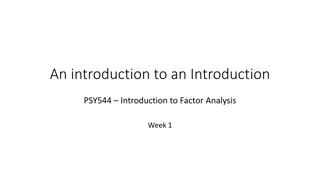The Emotional Factor in Performance Evaluation
Explore the impact of emotions like happiness, sadness, anger, fear, trust, and surprise on performance in sports and activities. Learn how to analyze and evaluate emotional factors and their effects, along with methods to investigate emotional states for better self-awareness and improvement.
Download Presentation

Please find below an Image/Link to download the presentation.
The content on the website is provided AS IS for your information and personal use only. It may not be sold, licensed, or shared on other websites without obtaining consent from the author. Download presentation by click this link. If you encounter any issues during the download, it is possible that the publisher has removed the file from their server.
E N D
Presentation Transcript
HIGHER PE THE EMOTIONAL FACTOR JD
Plagiarism Warning Throughout this power point there are sample answers. Please note that these sample answers are not to be used as your own work they are for reference only. If you fail to comply with this request you will be at risk of failing the course.
HIGHER PE COMMAND WORDS Describe (Tell us how to do it!) Explain (Tell us why you did it, justify! (+ / -) ) Evaluate (Better than before? Evidence please!) Analyse (Benefits/limitations = result on performance)
THERE ARE FIVE ASPECTS IN THE EMOTIONAL FACTOR These are: Happiness & Sadness Anger Fear Trust Surprise
HOW CAN THE EMOTIONAL FACTOR AFFECT HOW CAN THE EMOTIONAL FACTOR AFFECT PERFORMANCE? PERFORMANCE? Here are some ways in which the following factors may impact performance. Happiness / Sadness May have an impact on confidence, self belief, you may doubt your own ability. You may be more optimistic or pessimistic. Anger Will impact on self control, decision making, clarity of thought. Fear Will impact on decision making, confidence, nerves. Trust This will affect self respect, respect for team mates, confidence I your own ability and others to execute roles/tasks etc. Surprise This will impact on decision making , resilience, confidence. https://www.youtube.com/watch?v=xNY0AAUtH3g
Emotional Factor Task Explain the effect the Emotional Factor can have on performance. (8) Tips For each aspect explain positive s and negative s these will have on performance. Give examples (+ & -) to back up what you are saying Eg - In Football, the aspect of Anger could lead to a player making a needless violent challenge on an opponent. This would impact performance negatively as they will likely be sent off or give away a free kick which can give the opponents an advantage in attempting to score. This whole episode could have been avoided if the player had controlled their feelings better which could possibly lead to a positive impact as they could turn their anger into motivation during the match allowing them to compete at a higher level for a longer amount of time.
METHODS OF METHODS OF INVESTIGATING .. INVESTIGATING .. Disciplinary Record Questionnaire / Self Reflection Coach Feedback Profile of Mood States Test (POMS) http://www.brianmac.co.uk/poms.ht m
Disciplinary Record Below is an example of a Basketball disciplinary record. A skilled assessor needs to fill this in as they know what to look for and are a reliable source. Foul Type Game 1 Game 2 Game 3 Technical (unsporting) Types of foul could be related to certain aspects of the Emotional Factor. Personal (types of contact) Flagrant (violent conduct) EG. Flagrant - Anger Shooting (illegal prevention)
Emotional Questionnaire Here is an example of an emotional questionnaire for elite level sportspeople: http://www.midss.org/content/ sport-emotion-questionnaire PS, its at bottom of page, word doc.
Profile of Mood States (POMS) http://www.brianmac.co.uk/poms.h tm POMS - A psychological test designed to measure a person's affective states. These include tension, depression, anger, vigour, fatigue, and confusion. Unlike personality traits, mood states are thought to be temporary and specific to a given situation, although moods can also be measured for recent prolonged periods such as the past several months. POMS is a popular research tool among sport psychologists. Take the test yourself and then compare your scores to the averages in the norms table to see which category you are closest too.
Task Describe one method you used to investigate the Emotional factor. (4) Explain why you chose this method of investigation (4)
Task break down Question 1 Name the method you used. Explain how you went about executing this method, tell us what you did, when you did it & how you did it etc. (2) Provide evidence from the method to prove you actually did it, such as: questions from the questionnaire, things your coach would assess you on, POMS questions / test criteria. Diagrams are allowed. (2) Question 2 Ease of use? Reliable source? Can be easily re tested after training? Shows strengths / weaknesses? Instant feedback? Gives motivation to improve?
Development Approaches Team Talks (coaches and players) Team Meetings (players only) Self Talk The 3 R s, Recognise, Regroup & Refocus. Mental Rehearsal, Rituals & Routines. Rewards , prizes, bonus s (Internal & External).
Team Talks (C&Ps) (Normally led by Coach, Manager) Pre game Re cap on training, game, targets of last week etc. Focus on opponents S&W s Motivation Tactics https://www.youtube.com/watch?v=cGQjam2ocqo Post Game (24 hrs) Post match analysis, positive & negative. C & P s share their opinions on ways forward. New targets, plans made.
Team Meetings (The things coaches don t hear!) Normally done by Captain, Senior players or you!! Pre game Motivation Recap tactics Target setting Mid game Organisation Tactics Motivation Post game Praising good performance Re setting targets Motivation
Self Talk the 3 Rs Recognise Regroup Re focus These three aspects can be done during training drills for each sport. They would be most effective during pressurised situations / drills or conditioned / training games or during real matches.
Recognise Where am l going wrong? How is it happening? What am I doing differently to before? Elite performers may ask questions such as these when in times of difficulty. Once they have figured out their problem they then can Re Group Fix errors by Positive thoughts of previous performances Visualising better performance Using motivational phrases that helped before Re Focus Calm down the situation Remember everything that has been done in training Clear mind, ready to achieve
Mental Rehearsal, Rituals & Routines. https://www.youtube.com/watch?v=RCA6I13aczM Badminton Stand in the same spot when serving. Basketball Bounce the ball 3 times before a free throw. Football Measure three steps back from the ball before a free kick. Volleyball Players all high five or celebrate after every point. These rituals can aid, Trust & Happiness. They will also conquer Fear and Surprise as you will be comfortable in your environment. However any variation of these could lead to Anger.
Development Needs Task (a) Evaluate the effect one Emotional development approach has had on your performance (4) (b) Explain your decision to use the selected development approach. (4)
Monitoring Emotional Development Training Diary - record thoughts and feelings Disciplinary record s, compare and contrast Questionnaire s, compare and contrast Coach feedback
Revision Q 1 Explain how the Emotional factor impacted on your performance, use any sport of your choice (4) Q 2 Discuss one method that you used to investigate within the Emotional Factor. Describe how you carried out this method. (4) Q 3 Justify your decision to use this method of investigation (4) Q 4 Review the information you gathered, making reference to your performance strengths and development needs. (4) Q 5 In detail describe a development approach you used to improve you development need(s), explain a training session you did using this method and how you would progress it. (4)





